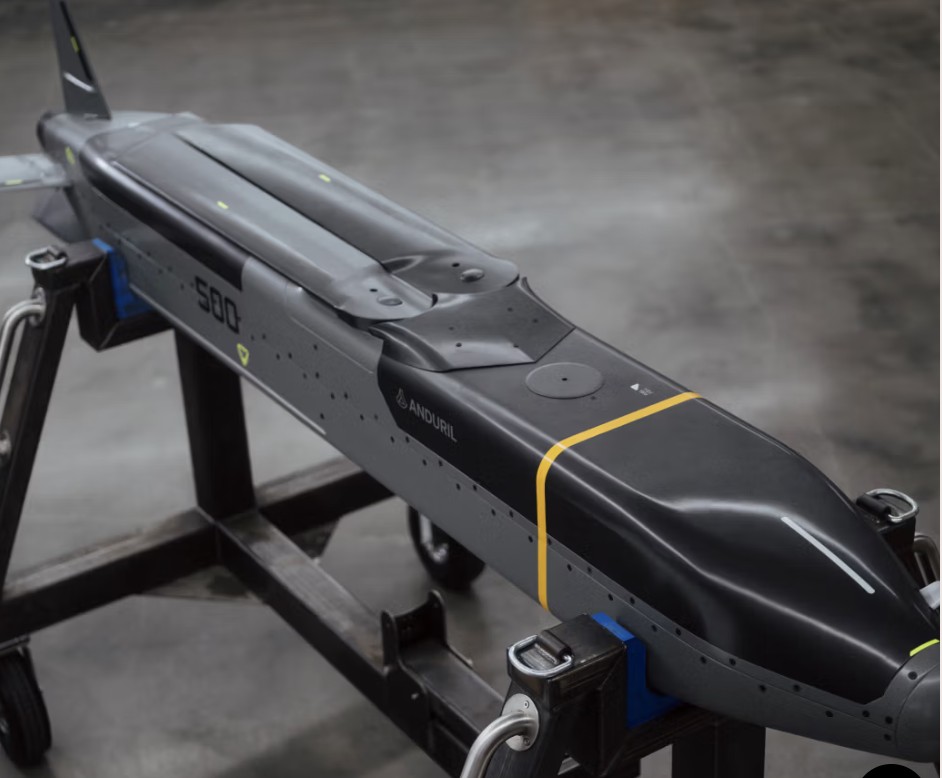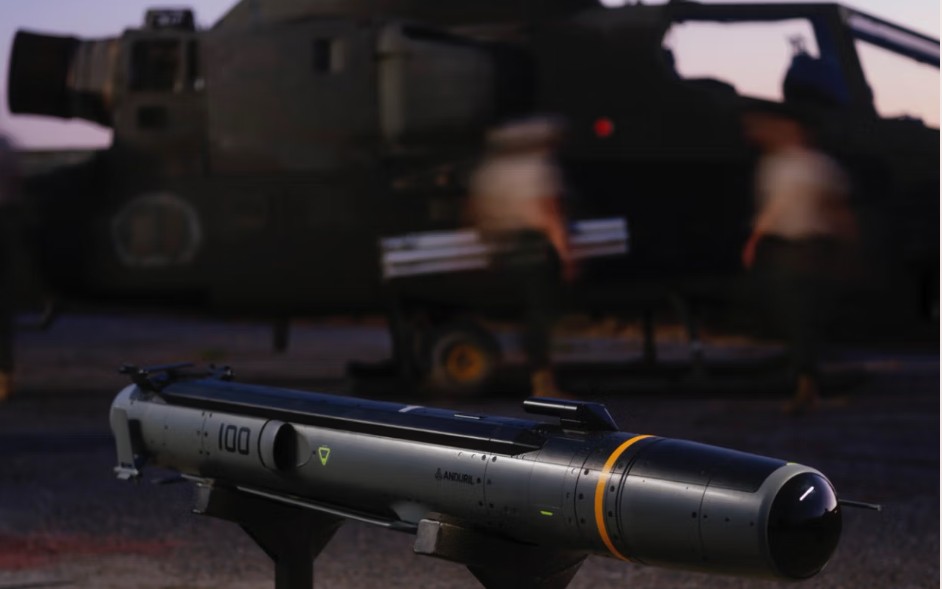This missile represents a major opportunity for the Polish arms industry. It's not just PGZ that stands to gain.

- PGZ's strategic agreement with Anduril concerns cooperation between the Polish defense industry and the American company in the field of autonomous systems.
- The essence of the agreement is the development and subsequent joint production of a Polish version of the Barracuda-500M missile. In this article, we explain what this missile is and why it's valuable to have it in the Polish arsenal.
- An earlier, pre-production purchase of Barracuda missiles by Poland is possible. The Americans are ready to sell them. What implications might this have for the implementation of the agreement?
Why is this agreement so important and eye-catching? After all, the Polish Armaments Group signs numerous letters of intent and similar declarations of cooperation every year. Before we attempt to answer this question, let's recall the content of the document signed by PGZ and Anduril Industries on October 27, 2025.
This includes, among other things, the joint development and production of long-range cruise missiles for the Polish Armed Forces. Under the agreement , PGZ and Anduril will jointly develop and then produce a Polish version of the Barracuda platform , involving companies from the Polish Armaments Group.
Specifically, this platform is part of the Enterprise Test Vehicle (ETV) program, run by the US Air Force. Its goal is to develop a compact, mass-produced, and cost-effective air-to-air missile that, after being fitted with a launch motor, can also be launched from a ground-based launcher. This version, developed in collaboration between Anduril and the American company RTX, has already successfully completed testing.
There are currently three versions of the Barracuda missile, differing in name, which is related to the range and weight of the warhead:
- The Barracuda-100 , with a warhead weighing approximately 10 kg and a range of up to 200 km, is used for combat helicopters , such as the AH-64 family, as well as light vehicles.
- Barracuda-250 with a 35-pound warhead (approx. 16 km) and a range of approximately 250 km when fired from the ground and over 350 km when fired from the air, can be used as armament for the HIMARS launchers, and potentially also for the Homar-K , which are already in service with the Polish Army.
- Barracuda-500 – a subsonic, jet-powered cruise missile with a modular architecture and a range of approximately 800 km , carrying a 45 kg warhead (high-explosive or thermobaric). It can be carried by multi-role F-16, F-35, and F-15E/EX aircraft , as well as by transport aircraft. The palletized Rapid Dragon system allows these missiles to be dropped from aircraft such as the C-130 Hercules or C-17 Globemaster. This allows any transport aircraft to temporarily function as a bomber.

The latest variant, the Barracuda-500 , which, according to the agreement, would be jointly produced in Polish plants and Polonized for supply to Polish armed forces and also for export, carries a 45-kilogram warhead a distance of approximately 900 km at a speed of 920 km/h . Full testing of this system is planned for 2026.
Experts claim that this isn't just another classic cruise missile, similar to others, but rather an autonomous carrier of various types of warheads, reconnaissance, or electronic warfare assets. These can be mounted depending on the mission the missile is to perform. The missiles can be used in larger formations. In this case, some can perform a reconnaissance role thanks to sensors detecting targets, others can act as decoys or carry electronic warfare systems, and still others can carry warheads.
One of the missile's advantages is its price. According to the manufacturer, the missile is planned for mass production, and therefore, is expected to be inexpensive. The unit cost is estimated at just over $200,000 . This is significantly less than other comparable systems. For example, the JASSM cruise missile costs over $1 million.
The Barracuda-500 has ten times the range of the Hellfire missile, which costs about $190,000 each. Poland purchased 800 AGM-114R2 Hellfire missiles for about $150 million for its AH-64E Apache attack helicopters.
In addition, the Barracuda missile has a flight time of up to 120 minutes, enabling it to function as a loitering munition, capable of remaining airborne for approximately two hours before striking a selected target .
Another advantage of the missile is that it will consist of half the number of components, require 95 percent less production tools, and its production time will be cut in half compared to classic cruise missiles.
Anduril also announces that it will soon demonstrate the Barracuda-500's autonomous teamwork capabilities, including data exchange with other systems, allowing the missile to avoid threats or change targets mid-flight.
Poland has a chance to launch production of autonomous cruise missilesWhy is the PGZ-Anduril agreement, although currently only on paper, one of the most important decisions for Poland if it translates into concrete solutions? It's not just another declaration, but a potential turning point in building modern, autonomous combat capabilities for the Polish Armed Forces.
"By combining PGZ's industrial potential with Anduril's experience in autonomous systems, we can introduce a solution to our market that meets the requirements of the armed forces. This agreement paves the way for technology transfer, joint research and development, and equipment development, which will strengthen the security of not only Poland but also the entire eastern flank of NATO," said PGZ CEO Adam Leszkiewicz.
Indeed, Poland has the opportunity to produce modern, autonomous Barracuda-500 cruise missiles domestically, reducing dependence on foreign suppliers and strengthening supply security during the crisis. Anduril Industries is well-advanced in the field of artificial intelligence (AI) and autonomous combat systems. This collaboration could provide Poland with access to solutions that would be difficult to acquire on its own.
Importantly, the Barracuda-500 is a long-range weapon (nearly 1,000 km), capable of operating outside the country's borders .
All this gives hope for the development of the domestic arms industry, technology transfer, and a real strengthening of deterrence potential. Soon, we will be producing missiles for the Homar-K launcher domestically and Polonizing British CAMM missiles. If we were to add modern cruise missiles with a considerable range, we would become a major missile manufacturer in Europe . Furthermore, we would join the still elite group of cruise missile manufacturers.
It is necessary to obtain the consent of the American government to provide military technologies.There is no doubt that a partnership with the Americans in this segment would strengthen the Polish defense industry, enable the expansion of domestic AI competencies, and create highly skilled jobs. The project assumes the broad inclusion of PGZ Group companies in the supply chain, but, as the PGZ CEO adds, this will also apply to private companies .
While this is just a declaration, its assumptions are ambitious, yet achievable, provided consistent action is taken. This agreement is only the first step towards achieving these competencies.
Less optimistic news is that production won't launch overnight. A key element now will be obtaining US government approval to share military technologies, which are subject to significant export restrictions in the US.
Only once we obtain such consent will we be able to discuss technology transfer, establishing production capacity at Polish companies, and determining whether an existing factory will be used for missile production or whether a new one will be built. PGZ and Anduril have declared they will cooperate closely with the governments of both countries.

It is also possible that Poland will purchase American missiles earlier.
- If the needs of the armed forces require a quick solution, the company is ready to sell missiles to Poland - assured Brian Moran, deputy head of Anduril for Europe.
But would such a purchase accelerate the Polonization of these missiles, or maybe the other way around?
And the most important question: will there be funding for this? PKO BP analysts estimate that even assuming the current high import intensity of defense spending, its total impact on Poland's GDP will be positive and higher than the actual expenditures. This indicates that this contract is worth pursuing, and an agreement is possible. Unfortunately, it's unclear how quickly the implementation agreements will be signed. Perhaps in a few years or a few months.
wnp.pl




